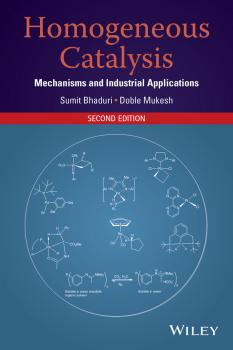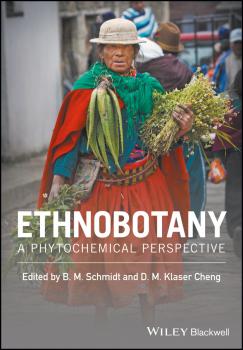Прочая образовательная литература
Различные книги в жанре Прочая образовательная литератураMulticomponent Reactions. Concepts and Applications for Design and Synthesis
Addressing a dynamic aspect of organic chemistry, this book describes synthetic strategies and applications for multicomponent reactions – including key routes for synthesizing complex molecules. • Illustrates the crucial role and the important utility of multicomponent reactions (MCRs) to organic syntheses • Compiles novel and efficient synthetic multicomponent procedures to give readers a complete picture of this class of organic reactions • Helps readers to design efficient and practical transformations using multicomponent reaction strategies • Describes reaction background, applications to synthesize complex molecules and drugs, and reaction mechanisms
Environmental Pest Management. Challenges for Agronomists, Ecologists, Economists and Policymakers
A wide-ranging, interdisciplinary exploration of key topics that interrelate pest management, public health and the environment This book takes a unique, multidimensional approach to addressing the complex issues surrounding pest management activities and their impacts on the environment and human health, and environmental effects on plant protection practices. It features contributions by a distinguished group of authors from ten countries, representing an array of disciplines. They include plant protection scientists and officers, economists, agronomists, ecologists, environmental and public health scientists and government policymakers. Over the course of eighteen chapters, those experts share their insights into and analyses of an array of issues of vital concern to everyone with a professional interest in this important subject. The adverse effects of pest control have become a subject of great concern worldwide, and researchers and enlightened policymakers have at last begun to appreciate the impact of environmental factors on our ability to manage pest populations. Moreover, while issues such as pesticide toxicity have dominated the global conversation about pest management, economic and societal considerations have been largely neglected. Environmental Pest Management: Challenges for Agronomists, Ecologists, Economists and Policymakers is the first work to provide in-depth coverage of all of these pressing issues between the covers of one book. Offers a unique multi-dimensional perspective on the complex issues surrounding pest management activities and their effect on the environment and human health Addresses growing concerns about specific pest management strategies, including the use of transgenic crops and biological controls Analyses the influence of global processes, such as climate change, biological invasions and shifts in consumer demand, and ecosystem services and disservices on pest suppression efforts Explores public health concerns regarding biodiversity, pesticide use and food safety Identifies key economic drivers of pest suppression research, strategies and technologies Proposes new regulatory approaches to create sustainable and viable crop protection systems in the framework of agro-environmental schemes Offering a timely and comprehensively-unique treatment of pest management and its environmental impacts in a single, inter-disciplinary volume, this book is a valuable resource for scientists in an array of disciplines, as well as government officials and policymakers. Also, teachers of undergraduate and graduate level courses in a variety of fields are sure to find it a highly useful teaching resource.
Applied Biophysics for Drug Discovery
Applied Biophysics for Drug Discovery is a guide to new techniques and approaches to identifying and characterizing small molecules in early drug discovery. Biophysical methods are reasserting their utility in drug discovery and through a combination of the rise of fragment-based drug discovery and an increased focus on more nuanced characterisation of small molecule binding, these methods are playing an increasing role in discovery campaigns. This text emphasizes practical considerations for selecting and deploying core biophysical method, including but not limited to ITC, SPR, and both ligand-detected and protein-detected NMR. Topics covered include: • Design considerations in biophysical-based lead screening • Thermodynamic characterization of protein-compound interactions • Characterizing targets and screening reagents with HDX-MS • Microscale thermophoresis methods (MST) • Screening with Weak Affinity Chromatography • Methods to assess compound residence time • 1D-NMR methods for hit identification • Protein-based NMR methods for SAR development • Industry case studies integrating multiple biophysical methods This text is ideal for academic investigators and industry scientists planning hit characterization campaigns or designing and optimizing screening strategies.
Innovative Drug Synthesis
This book covers all aspects of the medicinal chemistry of the latest drugs, and the cutting-edge science associated with them. Following the editors’ 3 successful drug synthesis books, this provides expert analysis of the pros and cons of different synthetic routes and demystifies the process of modern drug discovery for practitioners and researchers. Summarizes for each drug: respective disease area, important properties and SAR (structure-activity relationship), and chemical synthesis routes / options Includes case studies in each chapter Illustrates how chemistry, biology, pharmacokinetics, and a host of disciplines come together to produce successful medicines Explains the advantages of process synthesis versus the synthetic route for drug discovery
Homogeneous Catalysis. Mechanisms and Industrial Applications
Over the last decade, the area of homogeneous catalysis with transition metal has grown in great scientific interest and technological promise, with research in this area earning three Nobel Prizes and filing thousands of patents relating to metallocene and non-metallocene single site catalysts, asymmetric catalysis, carbon-carbon bond forming metathesis and cross coupling reactions. This text explains these new developments in a unified, cogent, and comprehensible manner while also detailing earlier discoveries and the fundamentals of homogeneous catalysis. Serving as a self-study guide for students and all chemists seeking to gain entry into this field, it can also be used by experienced researchers from both academia and industry for referring to leading state of the art review articles and patents, and also as a quick self-study manual in an area that is outside their immediate expertise. The book features: • Topics including renewable feed stocks (biofuel, glycerol), carbon dioxide based processes (polycarbonates), fluorous solvents, ionic liquid, hydroformylation, polymerization, oxidation, asymmetric catalysis, and more • Basic principles of organometallic chemistry, homogeneous catalysis, and relevant technological issues • Problems and answers, industrial applications (case studies), and examples from proven industrial processes with clear discussions on environmental and techno-commercial issues • Extensive references to cutting edge research with application potential and leading patents • Tables and illustrations to help explain difficult concepts
Ecological Biochemistry. Environmental and Interspecies Interactions
The first stand-alone textbook for at least ten years on this increasingly hot topic in times of global climate change and sustainability in ecosystems. Ecological biochemistry refers to the interaction of organisms with their abiotic environment and other organisms by chemical means. Biotic and abiotic factors determine the biochemical flexibility of organisms, which otherwise easily adapt to environmental changes by altering their metabolism. Sessile plants, in particular, have evolved intricate biochemical response mechanisms to fit into a changing environment. This book covers the chemistry behind these interactions, bottom up from the atomic to the system's level. An introductory part explains the physico-chemical basis and biochemical roots of living cells, leading to secondary metabolites as crucial bridges between organisms and the respective ecosystem. The focus then shifts to the biochemical interactions of plants, fungi and bacteria within terrestrial and aquatic ecosystems with the aim of linking biochemical insights to ecological research, also in human-influenced habitats. A section is devoted to methodology, which allows network-based analyses of molecular processes underlying systems phenomena. A companion website offering an extended version of the introductory chapter on Basic Biochemical Roots is available at http://www.wiley.com/go/Krauss/Nies/EcologicalBiochemistry
Ethnobotany. A Phytochemical Perspective
Ethnobotany: A Phytochemical Perspective explores the chemistry behind hundreds of plant medicines, dyes, fibers, flavors, poisons, insect repellants, and many other uses of botanicals. Bridging the gap between ethnobotany and chemistry, this book presents an introduction to botany, ethnobotany, and phytochemistry to clearly join these fields of study and highlight their importance in the discovery of botanical uses in modern industry and research. Part I. Ethnobotany, explores the history of plant exploration, current issues such as conservation and intellectual property rights, and a review of plant anatomy. An extensive section on plant taxonomy highlights particularly influential and economically important plants from across the plant kingdom. Part II. Phytochemistry, provides fundamentals of secondary metabolism, includes line drawings of biosynthetic pathways and chemical structures, and describes traditional and modern methods of plant extraction and analysis. The last section is devoted to the history of native plants and people and case studies on plants that changed the course of human history from five geographical regions: Africa, the Americas, Asia, Europe, and Ocean. Throughout the entire book, vivid color photographs bring science to life, capturing the essence of human botanical knowledge and the beauty of the plant kingdom.
Hydrogen Production. by Electrolysis
Covering the various aspects of this fast-evolving field, this comprehensive book includes the fundamentals and a comparison of current applications, while focusing on the latest, novel achievements and future directions. The introductory chapters explore the thermodynamic and electrochemical processes to better understand how electrolysis cells work, and how these can be combined to build large electrolysis modules. The book then goes on to discuss the electrolysis process and the characteristics, advantages, drawbacks, and challenges of the main existing electrolysis technologies. Current manufacturers and the main features of commercially available electrolyzers are extensively reviewed. The final chapters then present the possible configurations for integrating water electrolysis units with renewable energy sources in both autonomous and grid-connected systems, and comment on some relevant demonstration projects. Written by an internationally renowned team from academia and industry, the result is an invaluable review of the field and a discussion of known limitations and future perspectives.
Molecular Magnetic Materials. Concepts and Applications
A comprehensive overview of this rapidly expanding interdisciplinary field of research. After a short introduction to the basics of magnetism and molecular magnetism, the text goes on to cover specific properties of molecular magnetic materials as well as their current and future applications. Design strategies for acquiring molecular magnetic materials with desired physical properties are discussed, as are such multifunctional materials as high Tc magnets, chiral and luminescent magnets, magnetic sponges as well as photo- and piezo-switching magnets. The result is an excellent resource for materials scientists, chemists, physicists and crystal engineers either entering or already working in the field.
Antelope Conservation. From Diagnosis to Action
Antelopes constitute a fundamental part of ecosystems throughout Africa and Asia where they act as habitat architects, dispersers of seeds, and prey for large carnivores. The fascication they hold in the human mind is evident from prehistoric rock paintings and ancient Egyptian art to today's wildlife documentaries and popularity in zoos. In recent years, however, the spectacular herds of the past have been decimated or extripated over wide areas in the wilds, and urgent conservation action is needed to preserve this world heritage for generations to come. As the first book dedicated to antelope conservation, this volume sets out to diagnose the causes of the drastic declines in antelope biodiversity and on this basis identify the most effective points of action. In doing so, the book covers central issues in the current conservation debate, especially related to the management of overexploitation, habitat fragmentation, disease transmission, climate change, populations genetics, and reintroductions. The contributions are authored by world-leading experts in the field, and the book is a useful resource to conservation scientists and practitioners, researchers, and students in related disciplines as well as interested lay people.









